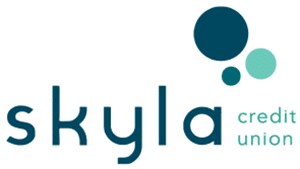Editorial Note: We earn a commission from partner links on Doughroller. Commissions do not affect our authors’ or editors’ opinions or evaluations. Learn more here.
Creating a Certificate of Deposit (CD) ladder is a savvy financial strategy that combines the safety and predictability of traditional CDs with the flexibility and higher yield potential of staggered maturity dates. This approach involves dividing your investment into equal parts and depositing them into CDs with varying terms, typically ranging from short to long durations.
By doing so, you can enjoy regular access to portions of your funds, mitigate the risks associated with interest rate fluctuations, and potentially earn higher returns than investing in a single CD. In this article, we’ll show you how to build a CD ladder and provide you with an example, helping you to maximize your earnings while maintaining liquidity to meet your short-term financial needs.
How To Build a CD Ladder
To get started in building your CD ladder you’ll need to ask yourself four simple questions.
- How much money do you want to invest?
- How much time do you want to put in between each CD’s maturity date?
- How do you want to split your investment?
- How soon do you want your first CD to mature?
To help you answer these questions, let’s have a look at a simple example. We’ll assume you have $25,000 to invest, you want CDs that mature one year apart, and you want to spread your investment evenly across each CD. So for this example, we’ll divide the investment into $5,000 increments, invested in one, two, three, four, and five-year CDs.
| CD Term (Years) | Interest Rate (%) | Initial Investment ($) | Maturity Value ($) |
|---|---|---|---|
| 1 | 1.0% | 5,000 | 5,050.00 |
| 2 | 1.5% | 5,000 | 5,151.13 |
| 3 | 2.0% | 5,000 | 5,306.04 |
| 4 | 2.5% | 5,000 | 5,519.06 |
| 5 | 3.0% | 5,000 | 5,796.37 |
At the end of the first year, the 1-year CD matures. You can either take the money and the interest earned or reinvest it into another 5-year CD to keep the ladder going.
In the second year, your 2-year CD matures, and you can do the same—either cash out or reinvest in another 5-year CD.
This process continues each year, providing you with either a source of funds or an opportunity to reinvest and extend your CD ladder. By doing this, you are not only ensuring that a portion of your investment becomes available each year but also benefiting from the typical high yields that CDs can offer.
Where To Build Your CD Ladder
There are a lot of online banks offering high yields on CDs and while you may not have heard of many of them, most everyone carries standard FDIC insurance so you know your money is safe. I’ve selected five CDs of different terms that all offer a terrific interest rate to get you started but you can also search through the best CD rates to find a brand or CD that is tailored to your needs.
One-Year CD from BMO Alto

Certificate of Deposit
Member FDIC
APY
5.05%
Term
12 Months
Min. Deposit
$0
Our Rating: 4.8
Two-Year CD from Skyla Credit Union

Certificate of Deposit
Member NCUA
APY
4.30%
Term
24 Months
Min. Deposit
$500
Our Rating: 4.5
Three-Year CD from Alliant Credit Union

Certificate of Deposit
Member NCUA
APY
4.20%
Term
36 Months
Min. Deposit
$1,000
Our Rating: 4.6
Four-Year CD from Discover® CD

Certificate of Deposit
Member FDIC
APY
3.75%
Term
48 Months
Min. Deposit
$2,500
Our Rating: 4.6
Five-Year CD from Ally

Certificate of Deposit
Member FDIC
APY
3.90%
Term
60 Months
Min. Deposit
$1
Our Rating: 4.3
Advantages of Building a CD Ladder
There are a lot of benefits to building a CD ladder and too few consumers use CDs to diversify their investments. Here are five excellent reasons you should start a CD ladder today:
- Improved Liquidity and Access to Funds: One of the significant advantages of a CD ladder is that it provides periodic access to a portion of your funds. Since the CDs in a ladder mature at different times, you won’t have to wait until the end of a long term to access all your money. This structure is especially beneficial for those who might need cash at various points but still want to earn more interest than a regular savings account would offer.
- Higher Interest Rates with Reduced Risk: Typically, longer-term CDs offer higher interest rates than shorter-term CDs. By including some longer-term CDs in your ladder, you can benefit from these higher rates. At the same time, you’re not exposing all your investment to the risk of locking in at a potentially lower rate, as you would with a single long-term CD, especially in a fluctuating interest rate environment.
- Flexibility in Adapting to Interest Rate Changes: A CD ladder offers the flexibility to take advantage of rising interest rates. As each CD matures, you have the option to reinvest the funds in a new CD, potentially at a higher rate if interest rates have increased. This flexibility allows you to adapt your investment strategy to changing economic conditions more effectively than if you were locked into a single long-term CD.
- Safety and Security: CDs are considered safe investments because they are typically insured by the FDIC (Federal Deposit Insurance Corporation) up to certain limits. This insurance protects your principal investment against bank failures. Therefore, a CD ladder can provide a secure way to grow your savings with minimal risk.
- Simplified Financial Planning and Goal Alignment: Building a CD ladder can be an effective way to align your investment strategy with your financial goals. For instance, you can time the maturity of your CDs to coincide with future financial needs, like funding a child’s education or a significant purchase. This planning can simplify budgeting and ensure that funds are available when needed, without the temptation or penalties of early withdrawal from a single, long-term CD.
Frequently Asked Questions (FAQ)
Why is a CD Ladder Considered a Low-Risk Investment?
A CD ladder is considered a low-risk investment because it involves CDs insured by the FDIC (Federal Deposit Insurance Corporation) up to certain limits, protecting your principal against bank failures.
Additionally, by spreading your investment across different maturity dates, you mitigate the risk of locking in all your money at a low-interest rate. This diversification within the time frames allows you to adapt to changing interest rates more effectively, providing a stable and predictable return while maintaining some level of liquidity.
How Can a CD Ladder Benefit Short-Term and Long-Term Financial Goals?
A CD ladder is versatile, catering to both short-term and long-term financial goals. For short-term objectives, the ladder provides periodic access to funds as individual CDs mature.
This means you can plan for upcoming expenses, like a vacation or a home improvement project, without waiting too long to access your funds. For long-term goals, such as retirement savings, the ladder allows you to benefit from higher interest rates typically offered by longer-term CDs, while still maintaining a cycle of accessibility.
This consistent and staggered maturity structure makes it an excellent tool for managing and growing your savings over time.
Final Thought on Why You Should Build a CD Ladder
Creating a CD ladder is a strategic move for those seeking a balanced approach to saving and investing. It elegantly navigates the trade-off between higher interest earnings and the need for liquidity. By staggering the maturity of CDs, investors can access funds periodically without sacrificing the higher interest rates typically offered by longer-term CDs.
This technique also offers a buffer against interest rate fluctuations, ensuring a more stable and predictable income stream. Whether you are planning for short-term goals or building a nest egg for the future, a CD ladder is a versatile tool that caters to a wide range of financial needs, making it a valuable addition to any prudent investor’s portfolio.

